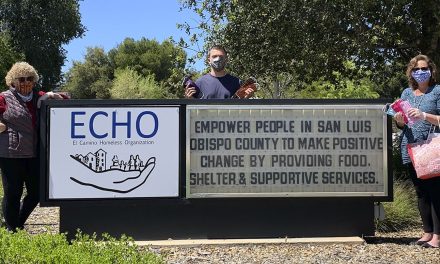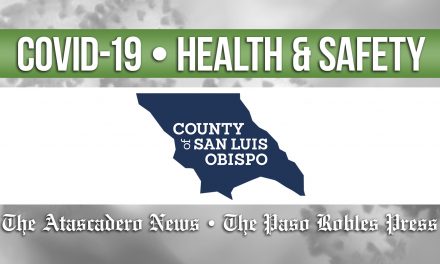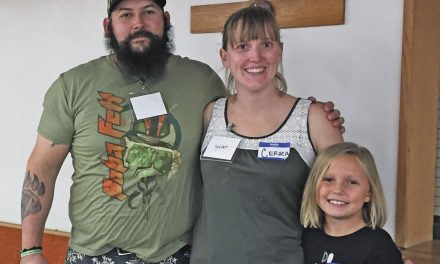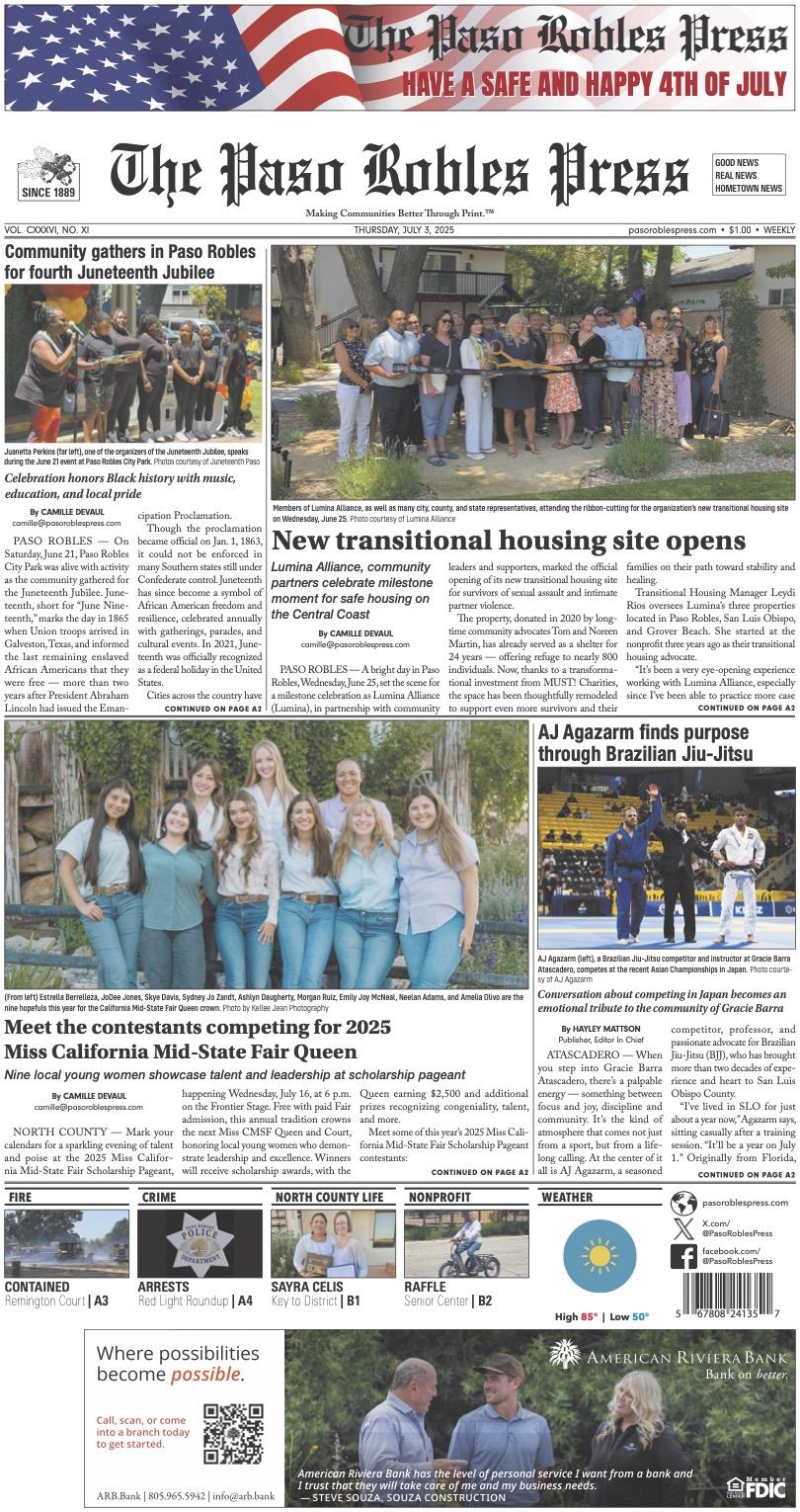SAN LUIS OBISPO COUNTY — Seeking to answer pertinent questions and dispel misinformation surrounding the novel coronavirus, COVID-19, the Paso Robles Press asked the County of San Luis Obispo Public Health Department several questions:
PASO ROBLES PRESS: I understand that the County is already coordinating with cities to deal with a possible coronavirus outbreak. When did this begin? What does it entail?
SAN LUIS OBISPO COUNTY HEALTH DEPARTMENT: The Public Health Department began coordinating with cities and other local partners, as well as state and national officials in January. The COVID-19 response team has been meeting regularly — weekly or more often — since then and are often in touch daily. We are following our existing response plans, including our pandemic response plan and crisis/emergency risk communication plan. Examples include consistent public information and updating local EMS teams. It also includes planning for continuity of operations, ways to handle large public events in the future, and other logistics.
We’re also communicating frequently with local hospitals and health care providers so they have the latest information, and we have the latest information about what they are seeing. This coordination is important because of the potential impact to our health care system overall — so that people who need care for a heart attack, for example, will be able to receive that needed care should a COVID-19 outbreak reach SLO County.
PRP: If the virus emerges on the Central Coast, where should people go to get tested if they think they are sick? How many test kits does the City/County have? Also, what is the criteria for someone getting tested? What are the specific set of symptoms they should be aware of, and what should they do if they or someone they know are experiencing them? Should people dial 911 if they feel sick?
SLOCPH: If you are seeking health care for respiratory symptoms, call ahead.
If you are sick with fever, cough, and fatigue and have not had close contact with someone diagnosed with COVID-19 or traveled to a country with a high incidence of COVID-19 in the past two weeks, you should rest and recover at home. If your symptoms get worse and you need medical care — or if have an existing medical condition that makes it more dangerous for you to have the flu or a cold — you should call your regular health care provider. If you do not have a regular health care provider (or if they are not available), you should call your nearest urgent care center or emergency department.
If you have these symptoms and you have either had close contact with someone diagnosed with COVID-19 or have traveled to a place with high incidence, you should call your regular health care provider. If you do not have a regular health care provider (or if they are not available), you should call the Public Health Department at 805-781-5500.
The criteria for testing are based on travel history and contact with other people who have traveled as well as symptoms. Our county continues to follow CDC (Center for Disease Control) criteria. In cases where a local doctor sees a patient and thinks they may be at risk, they contact us, and we work closely with the doctor and patient to determine if they are at risk and need to be tested.
PRP: What is the best source of information people can go to keep abreast of the situation?
SLOCPH: We’re sharing updates regularly at readySLO.org and on our social media channels: facebook.com/SLOPublicHealth.org, twitter.com/slopublichealth, Instagram.com/slopublichealth. People who prefer to get updates by phone can call our Public Health Information Line at (805) 788-2903 (This is a recorded message with updates on the situation).
PRP: What steps can people take to prepare? Should people be stockpiling toilet paper and water?
SLOCPH: The most important thing for people to do right now is take the “boring” tried-and-true steps we know are effective at containing the spread of viruses:
• Get your flu shot to protect against flu, which can produce symptoms similar to COVID-19.
• Wash your hands often with soap and water for at least 20 seconds. If soap and water are not available, use an alcohol-based hand sanitizer.
• Avoid touching your eyes, nose, and mouth with unwashed hands.
• Cover your cough or sneeze with a tissue or in your elbow.
• Clean and disinfect frequently touched objects and surfaces.
• Avoid close contact with people who are sick.
• Stay home when you are sick and avoid contact with others.
• If you’re sick with a contagious illness, call your health care provider or clinic before you arrive. They will provide you with special arrival instructions to avoid infecting others.
• Don’t go to the emergency room unless you have a medical emergency.
• Think twice about travel to other countries where community spread is present. See CDC travel advisories.
Living in California, we always need to be prepared for an emergency. We always recommend that residents be prepared with a home emergency kit with a three-day supply of food, water, and other essentials. A good overview of this advice and what to include in your kit is online here: prepareslo.org/en/family-preparedness.aspx. That said, we’re not currently recommending that people stockpile supplies beyond this regular preparation. We’re also not recommending that residents who are not sick stockpile or wear masks.
PRP: In Placer County, where the first death occurred, officials stated that they have 911 dispatchers screening calls involving respiratory distress to help protect EMS personnel when responding to the situation. Is the SLOCPH recommended taking similar precautions?
SLOCPH: In short, yes. Dispatch is performing basic screening to give first responders a heads-up of any cases that may require extra precaution, and responding crews are performing further screening to notify hospitals.
In mid-February, the SLO County EMS Agency, as part of the County Public Health response to COVID-19, released guidance to dispatch agencies, fire departments, and ambulance providers advising how to respond to known/suspected COVID-19 911 emergency calls. Guidance includes call screening questions, early notification of emergency responders of known/suspected COVID-19, appropriate personal protective equipment, including donning and doffing, early communications with hospitals, and disinfecting equipment. This guidance was shared extensively and is being constantly evaluated and updated as guidance from CDC is released.












